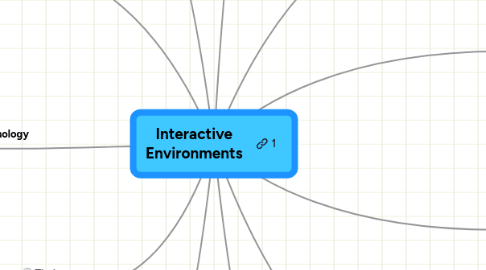Interactive Environments
by Zaharco Cosmin


1. Situation
1.1. Involuntary
1.2. Voluntary
1.3. Mandatory
2. Presence
2.1. Virtual
2.2. Physical
2.2.1. Touch
2.2.1.1. Single-touch
2.2.1.2. Multi-touch
2.2.2. Audio
2.2.3. Visual
2.2.4. Biometrical
2.2.5. Wireless
3. Technology
3.1. Electronic
3.2. Informational
3.3. Communication
3.4. Mechanical
3.5. Audio-visual
4. Timing
4.1. Real-time
4.2. Scheduled
5. History
5.1. Mechanical machines
5.2. Telegraph
5.3. Telephone
5.4. Personal computer
5.5. Internet
5.6. Mobile phones
6. Number of participants
6.1. One-to-one
6.2. One-to-many
6.3. Many-to-one
6.4. Many-to-many
6.5. Communities
7. Type of participants
7.1. Human to human
7.1.1. Conversational
7.1.2. Behavioural
7.2. Human to computer
7.2.1. Human to document
7.2.2. Human to system
7.3. Computer to computer
7.3.1. P2P Networks
7.3.2. Server/Station Networks
8. Result of interaction
8.1. Behaviour
8.2. Change
8.3. Creation of information
8.4. Emotion
8.5. Exchange of information
9. Type of interaction
9.1. Desktop
9.1.1. Conversational
9.1.2. Manipulation
9.1.3. Locomotion
9.2. Ubiquitous (omnipresent)
9.2.1. HAPTIC
9.2.2. Audio-visual
9.2.3. Wearable
9.2.4. Responsive
9.2.5. Biological
9.2.6. Interactive environments
